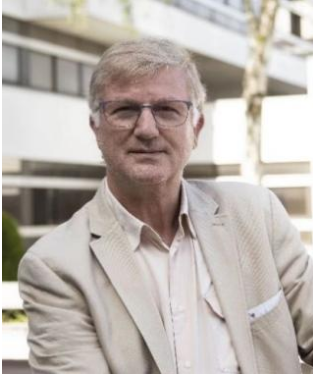报告题目:Bayesian Physics-Informed Neural Networks for Linear Inverse Problems: Application to Infrared Image Processing
报告专家:Prof./Dr. Ali Djafari
报告时间:5月26日(周一)13:00-13:40
报告地点:人工智能研究院(老行政楼北楼)311会议室
报告人简介:

Prof./Dr.Ali Djafari is a distinguishedprofessor at Paris-Saclay University (Univ. Paris 11) France, Research Director of French National Research Center (CNRS). Pioneer and chairman of International Conference on Maximum Entropy and Bayesian Approaches (50 years); Top talent of Zhejiang Invited foreign-experts; Laureate of the Westlake Prize of Zhejiang for significate contribution of foreign experts; Laureate of the International scientific cooperation of Zhejiang.
He received the master and two PhD degrees from University of Paris 11 respectively in 1980, 1994 and 1998 respectively. His proposed Gaussian Porter image segmentation algorithm, fast Bayesian variational method, hyperparameter Bayesian inference method, etc., have been highly recognized by the international academic and industrial communities, and have been widely applied in the fields of non-destructive detection, mechanical fault diagnosis, medical image recognition, and industrial big data analysis. His methods and inventions have been directly adopted by Airbus, Thales, Dassault, CEA, etc. He has presided 31 projects (with 10 million euros funding), published over 300 papers, 2 monographs and 12 textbooks; He supervised 21 doctoral and 31 master's students.
报告摘要:
Inverse problems are present across scientific and engineering domains, where we seek to infer hidden parameters or fields from indirect, noisy observations. Classical methods, such as regularization and Bayesian inference, provide theoretical foundations for addressing ill-posedness, but face limitations in high-dimensional or computationally expensive problems. Physics-Informed Neural Networks (PINNs) offer a promising data-driven approach by embedding physical laws within neural networks. This paper introduces a Bayesian PINN (BPINN) framework, extending the classical PINNs, accounting for modeling and measurement errors via priors and giving the possibility to quantify uncertainties in inverse problems. To show the performances of the proposed approach, we consider the inverse problems of infrared image processing, deconvolution and super-resolution, and show the results on some simulation and real industrial application cases.

